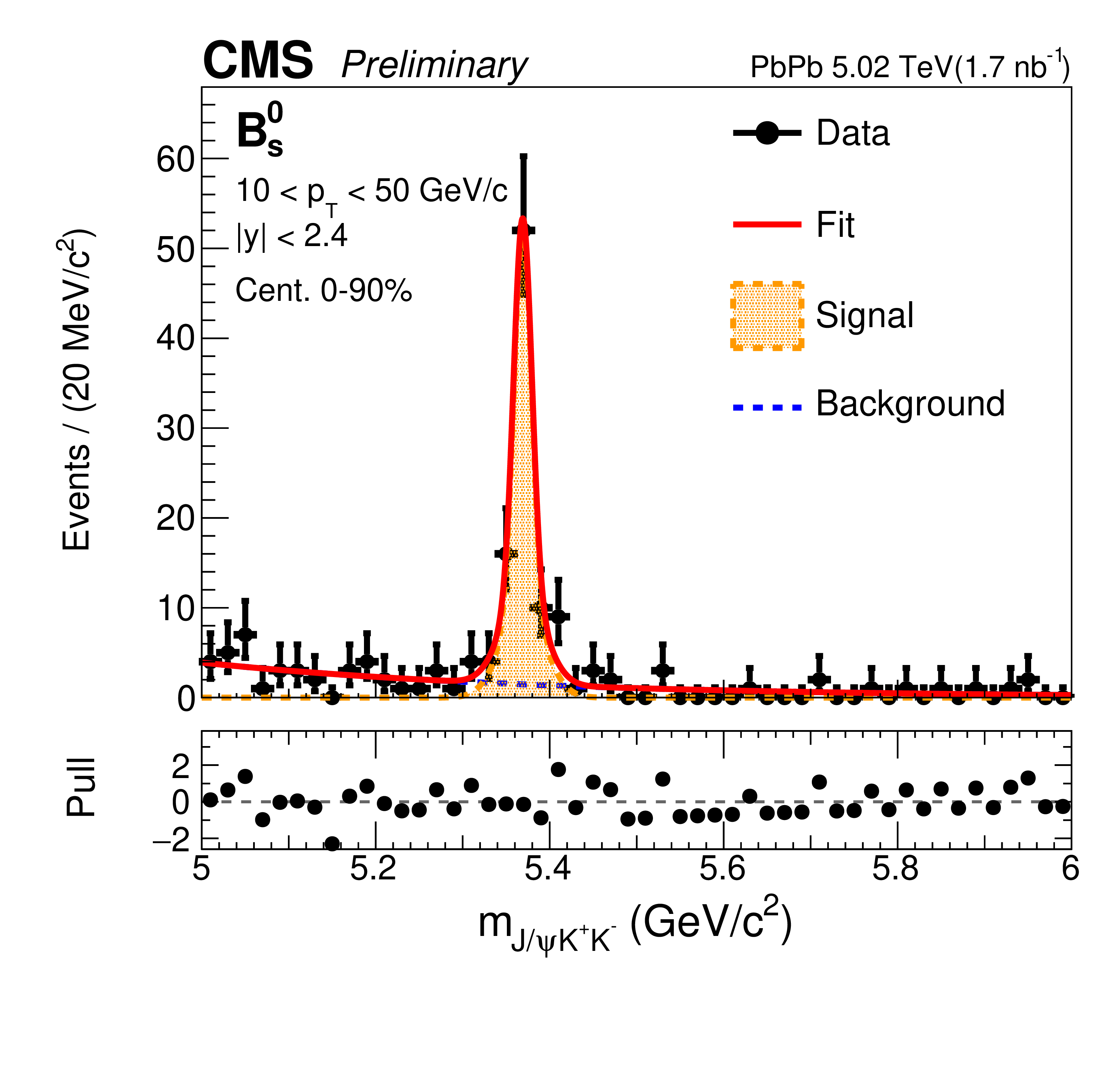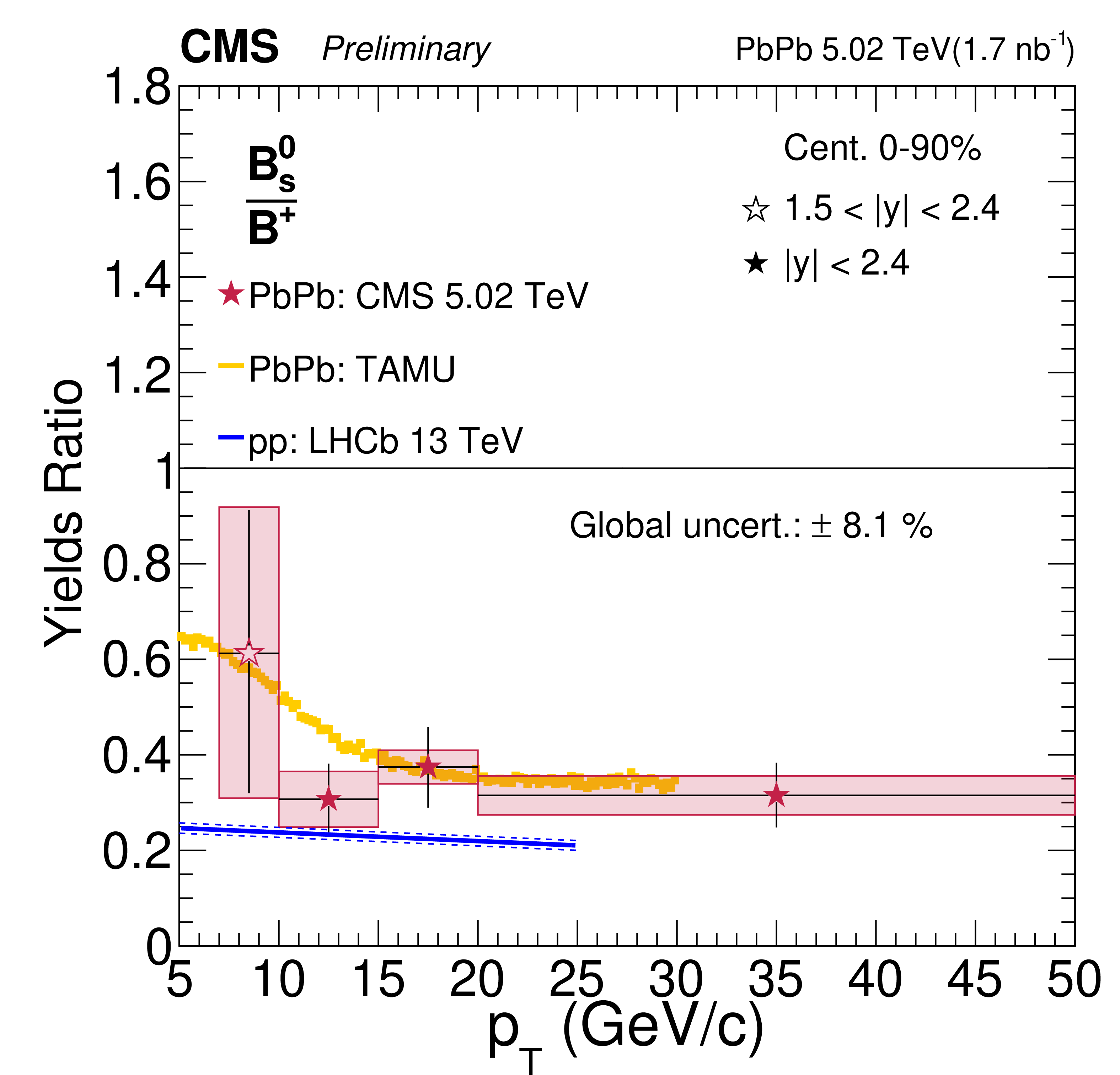Beauty in QGP
"The first observation of the Bs meson in nuclear collisions and its exploration as a novel probe of the quark gluon plasma are reported by the CMS group. The results were shown at the Hard Probes conference"

The b quark offers a very rich phenomenology and plays a central role experimentally such as at the LHC. Its decay occurs via generation-changing processes, which tend to involve loop and box diagrams. These allow precision tests of the standard model (SM) and provide high sensitivity to phenomena beyond it (New Physics, NP). A clear case in point are the so-called flavor anomalies, which remain as the most significant hint of NP in current collider data. The Bs meson is of particular interest at hadron colliders (not accessible at B factories). Phenomena realising above-mentioned processes involve rare decays and flavour oscillations and CP violation. B decays are further used in direct searches for NP particles and to find and study the nature of exotic states.
In addition to facilitate precision tests of the SM and exquisite sensitivity to NP, b quarks are now being further explored to probe the hot medium produced in collisions of heavy ions at the LHC, referred to as the quark gluon plasma (QGP). Previously, the presence of b-flavored particles could be inferred using inclusive approaches (e.g. identifying charmed particles or leptons originating from the b quark decay or jets of particles from its hadronization). Now, the CMS collaboration has accomplished the feat of reconstructing the complete decays of b hadrons in the challenging (very busy, messy) environment of LHC’s nuclear collisions.
The observation of the Bs signal, with a significance well exceeding 5 standard deviations, has been reported at the Hard Probes Conference.
The results were obtained using PbPb collision data collected by CMS during November 2018. The achieved ability of measuring individual particles, through their reconstructed decays, allows novel and precise studies of the properties of the hot medium produced in these collisions. These measurements allow to study the b-quark hadronization in the presence of the hot quark-matter medium and to probe the flavor depende of energy loss as the quark traverses the medium. The ratio of the rates of Bs and B+ particles is also reported, which allows to probe the phenomenon of strangeness enhancement expected in the presence of the QGP.
The measurement has been produced by a collaboration between the LIP and MIT groups in CMS. Preliminary studies had been reported in a LIP MSc thesis. LIP summer students have contributed the determination of dominant systematic uncertainties.
Further interpretation of these PbPb collision results will benefit from measurement of the b-quark fragmentation in pp collisions at the same energy of 5 TeV. This is the same central ingredient we have studied in 13 TeV pp collisions in the context of the recent Bs —> mumu decay measurement.
Figures:
The Bs meson signal reconstructed by CMS in PbPb collisions:

The ratio of Bs and B+ production rates in PbPb and comparison to theory and pp data:

